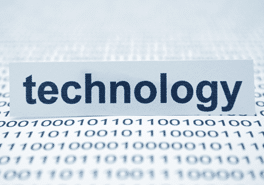When we ask our clients what their biggest struggles are as the administrator of a practice, we always hear “staying current with all of the lingo, specifically technology jargon.” Both healthcare and technology can change so quickly. It can be overwhelming to know what you need to know.
We’ve compiled a list of seven important technology terms that are commonly misrepresented, misunderstood or misused in clinical IT to help you stay educated on what matters.
1. Interoperability
This provides the ability of any one clinic’s systems to exchange data with similar or related systems in other medical organizations.
Interoperability has many facets. In its simplest form, it can be the exchange of Coordination of Care Documents (CCDs) or HL7-interfaces that exchange order-and-results data. In it’s most mature state, interoperability will facilitate the exchange of fully-fledged medical charts between hospital and clinic.
With a national interoperability mandate set for 2017, specifics are yet to be fully-understood, published or explained. Clinical IT and administrators need to be ready to understand, and then act, in a relatively short timeframe.
2. Redundancy
Conceptually, redundancy is commonly understood. But, in application, practices often fail to scrutinize the layers of redundancy needed once the practice is wholly-dependent on the IT function for the electronic medical record and cash flow.
Redundancy is now a term applied to all layers of the IT environment. It can cover everything from telecom and computing hardware all the way to security layers, staffing, and documentation of key passwords and credentials.
Failure to understand the layers necessary can result in lost productivity, patient trust and revenue.
3. Cryptolocker
There are hundreds of variants of this malware built around the general “cryptolocker” framework. They’re compromising thousands of systems in the United States and abroad. This malware is potentially deceptive in the medical context, where blocked access to data can be inconvenient and dangerous to patient health-and-safety, and potentially law-breaking.
Defenses are complicated. In fact, when not done correctly or with sufficient depth, defenses are entirely ineffective. Oh, and this malware’s primary means of propagation relies on the types of open-connectivity and constantly-upgraded software environment that the EHR and interoperability rely on.
4. Safe Harbor
Safe Harbor is a regulatory loophole. Under Safe Harbor, a whole host of personnel and training shortfalls (or even failures) can be forgiven (and not reported) with appropriate electronic data protection.
For Safe Harbor to be attained, data must be encrypted at the right stage of transit, every time – and is subject to audit verification.
5. Health Information Exchange (HIE)
In a utopia, HIE is a single, shared, highly-secure, yet-easy-to-use data repository. It will allow any authorized medical provider to access complete charting history on a patient. This ideal repository stores the record from any clinic, hospital, specialist, imaging centers or lab that a patient has visited. In practice, however, HIE is a conceptual construct with hundreds of variations, not all of which are built to play well with others.
Understanding and having a plan for your practice’s involvement in the HIE should be on your 12-18 month IT roadmap. It should also be regularly discussed with your IT department, software vendors and technology service providers.
6. Cloud Computing
Healthcare practices are faced with countless cloud computing options ranging from the public cloud to the most-discrete, server-room-emulating private cloud – and everything in-between.
With all the variations of “cloud computing,” the term has become diluted and vague. Administrators now need to understand the subtext that delineates dozens of variants of “cloud computing” and “subscription-based IT.”
7. Bring your Own Device (BYOD)
Almost every member of your organization likely has a preference on platform, device and carrier. The implications associated users bringing their own devices to work goes much further than security.
If your practice has a BYOD Policy, it can create significant demand for support, integration and functionality, causing a potentially substantial drain on IT resources.
There are hundreds of new healthcare concepts developed each year and administrators are hard pressed to stay current. Working with a service provider that specializes in healthcare IT can help you stay current, compliant and knowledgeable in upcoming technology trends and threats. What other tech buzzwords do you hear that are obscure?
